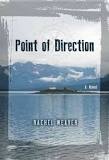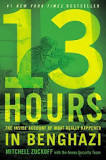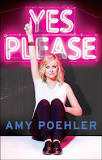Wh en I decided to escape from winter, I coordinated events quickly not certain if I wanted a sit-on-the-beach-sipping-fruity-drinks kind of experience, a cram-in-as-many-things-as-you-can experience, or perhaps somewhere in between. After a day or two of just relaxing in the sun, taking long walks on the beach, and playing in the surf, I decided it was time to stray from the tranquility of the resort.
en I decided to escape from winter, I coordinated events quickly not certain if I wanted a sit-on-the-beach-sipping-fruity-drinks kind of experience, a cram-in-as-many-things-as-you-can experience, or perhaps somewhere in between. After a day or two of just relaxing in the sun, taking long walks on the beach, and playing in the surf, I decided it was time to stray from the tranquility of the resort.
I had heard great things about the Arenal volcano, so it seemed a reasonable place to start. Off to the tourist desk I went and signed up for a trip the following day to Arenal and Baldi hot springs. I paid little attention to the mention of hot springs. They seemed a side note to the majesty of the volcano. But I played along, wearing my swimming suit and packing a change of clothes and a towel.
The following morning I met Ronald, the driver and guide for the day, in the lobby and off we went with two other women. We turned our backs on the coastline and headed northeast back toward San Jose and the interior of the country. The drive is 2.5-3 hours, depending on traffic, road conditions, weather. We made a single stop at some lovely gardens that naturally included a souvenir shop, bathrooms, and coffee samples – rather delicious, I must say.
As we headed further into the clouds, the once clear skies turned from fog and mist to an angry downpour. And that’s when it dawned on me why the hot springs are included in the trip…the chance of actually getting a glimpse of Arenal, much less a full, unencumbered view was relatively low. Somewhere between being hit by lightning and winning a Powerball.
The drive was great though. We went through a few small towns, so got to see homes, schools, bus stops, roadside stands, grocery stores – all the everyday sights that make traveling such a rich experience. Our drive was slow during some of the periods of heavy rain when navigating potholes ranked among the most steely-nerved of Olympic sports.
To their credit, the hot springs are lovely. There are 25 different pools, a few cool, but most warm. It was an excellent place to relax and imagine the skies lifting and Arenal making an appearance. During the few hours we were there, it looked like it could happen once or twice, but, alas, it was not to be.
It reminded me of my trip to Japan a few years ago when several of us piled into a bus to go to Mt. Fuji. About an hour into the trip, the guide mentioned that the mountain could only be seen once every three to four days. But then, we saw it. It was more amazing than I’d expected. At each level we stopped, we got a slightly different view. It was windy. It was cold. No one cared. Because on that day, our 25% chance had skyrocketed to 100% and it was like we’d been struck by lightning.
I should have known better than to think it might strike again at Arenal, but you don’t know if you don’t try, you always have the hot springs to distract you, and now there’s even more reason to return to Costa Rica!

 So there I was on the first day of the year, contemplating life, holiday-induced cookie consumption, and the cruelty of single-digit temperatures, when it dawned on me that I didn’t have to passively watch the season take root. More importantly, I recalled that I had an airline credit that was about to expire and was generous enough to take me almost anywhere I’d like to go.
So there I was on the first day of the year, contemplating life, holiday-induced cookie consumption, and the cruelty of single-digit temperatures, when it dawned on me that I didn’t have to passively watch the season take root. More importantly, I recalled that I had an airline credit that was about to expire and was generous enough to take me almost anywhere I’d like to go.


 During the Q&A following the film, Fulton and Pepe seemed to have genuine relationships with the people they followed in the film. To me, this was exhibited even more by how they encourage the two students (both of whom have since graduated) and Principal Viland (far left in picture) to field most of the questions.
During the Q&A following the film, Fulton and Pepe seemed to have genuine relationships with the people they followed in the film. To me, this was exhibited even more by how they encourage the two students (both of whom have since graduated) and Principal Viland (far left in picture) to field most of the questions.






